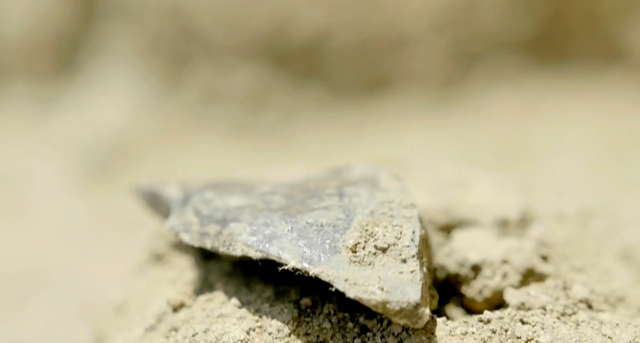
Researchers Unearth 3-Million-Year-Old Tools in Kenya, Shedding Light on Early Human Evolution
In a groundbreaking discovery, archaeologists have uncovered tools that are more than 3 million years old on the Homa Peninsula in Kenya, a region often referred to as the "cradle of humankind." This new find provides valuable insight into the development of human ancestors and their tool-making capabilities, offering a clearer picture of life during the time of "Lucy," one of humanity's earliest known relatives.
The excavation, led by Tom Plummer from the City University of New York, revealed sharp-edged flakes—essentially primitive knives—at a site called Nyanga. These tools, crafted by striking one stone against another, represent some of the earliest examples of technology ever used by human ancestors. Even after millions of years, these blades remain remarkably sharp. According to Plummer, these tools would have been crucial for activities such as cutting and peeling fruits and vegetables, as well as stripping meat from animals like hippos. Furthermore, the meat would have been tenderized by pounding it between stones, showing the ingenuity of early hominin societies.
Also Read:- Indonesia Sacks Coach Shin Tae-yong Amid World Cup 2026 Push
- Focus Shifts to ICC Champions Trophy 2025 After Test Series Setbacks
These tools are part of what archaeologists call the Oldowan tool kit. Plummer believes that the development of this technology marked one of the most important milestones in human history. By enabling early humans and their ancestors to access a wider variety of foods, these tools would have significantly influenced the growth of both the brain and body. Plummer suggests that the use of these tools could have initiated a feedback loop, whereby improvements in technology and diet led to more sophisticated beings.
Interestingly, along with the tools, the team discovered the tooth of a Paranthropus, an extinct hominin species. This unexpected find reveals that the first tool-making technology may not have been exclusive to early humans but rather a practice adopted from other hominin species. Plummer theorizes that human ancestors learned tool-making from others, eventually using these innovations to outcompete and outlast their rivals.
Rick Potts, the director of the Smithsonian's Human Origins Program, highlighted the significance of these discoveries, noting that they challenge previous assumptions about the origins of humanity. He pointed out that the more we uncover about our ancestors, the more we realize the fragility of life and how evolutionary paths can be altered by even the smallest of innovations.
The discovery on the Homa Peninsula is part of a long-term research effort that began nearly four decades ago. The region has yielded numerous important findings that continue to shape our understanding of human evolution. Despite the challenges of dating ancient artifacts and the complexities of archaeological work, persistence in the field has led to these remarkable insights, offering a deeper understanding of the evolution of technology and the creatures that shaped our distant past.
As scientists continue their research, they are refining our understanding of human origins. What was once thought to be a rapid period of evolutionary change is now seen as a much slower, more complex process that stretches back millions of years. This discovery serves as a reminder of the resilience of humanity's journey through time, illustrating that the tools that helped shape our ancestors' survival still leave their mark on us today.
Read More:

0 Comments